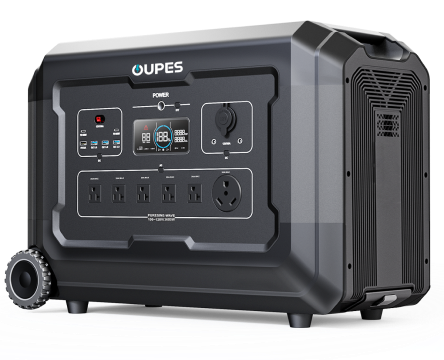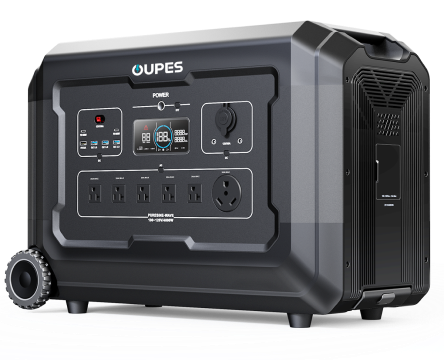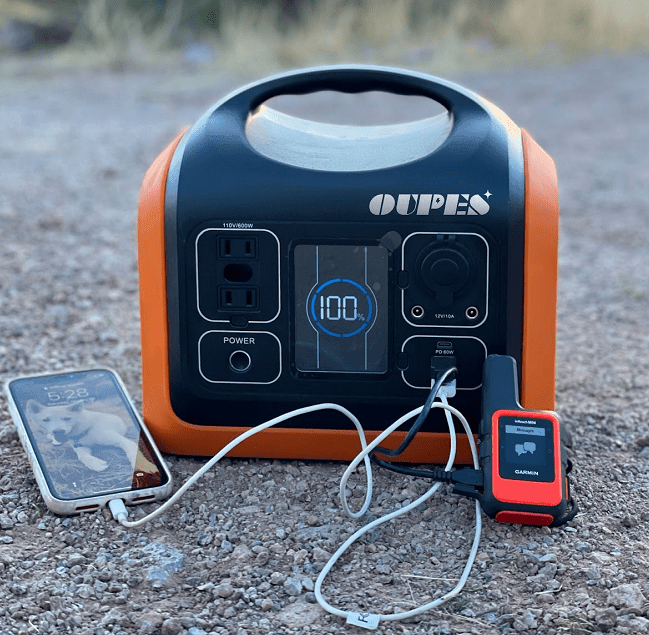In our fast-paced world, smartphones, tablets, and laptops are indispensable for staying connected and entertained. However, maintaining their charge throughout the day can be challenging.
Understanding terms like mAh and Ah is crucial to compare devices for better battery life. Opt for a higher mAh in your smartphone, and you can say goodbye to worrying about running out of power when you need it most.
This article discusses mAh: How to calculate a battery storage capacity, how it influences device performance. We will also discuss the factors to consider when evaluating batteries for various applications. Keep reading to learn more.
What is mAh?
mAh (milliampere hour), quantifies the electric charge stored in a battery, specifically measuring its delivery in an hour. Devices with higher milliampere hours generally offer longer runtimes between charges.
Many people focus on estimated battery life hours when shopping for devices. However, mAh provides a more precise measure of how long a device can last on a single charge.
Checking the milliampere-hour spec before purchasing any electronic device is crucial. This is because it directly correlates with the device's runtime and power storage capacity.
mAh is a standard unit for measuring energy storage in portable power stations and solar generators. This is vitall in understanding their capacity.
For applications like running larger appliances with a solar generator, choosing one with higher mAh is necessary to sustain high-wattage devices for extended periods.
mAh is particularly vital for solar generators or battery backup systems during blackouts or prolonged off-grid periods. A lower mAh means shorter operation times without recharging using solar power.
What is the Distinction Between Mah and Ah?

mAh and Ah represent units of measurement for a battery's energy storage capacity, with Ah being a larger unit than mAh. A 1 Ah rating is equivalent to 1000 mAh.
Generally, smaller batteries are specified in mAh, while larger ones are denoted in Ah. For instance, a 12V car battery with a 50 Ah capacity and a 5-amp hourly consumption will run for approximately 10 hours.
In the case of a smartphone featuring a 5000mAh battery, consuming 200mA per hour, it would endure for 2.5 hours before recharging. OUPES portable power station harnesses an EV-grade LiFePO4 energy cell, capable of enduring over 3500 cycles at an 80% discharge depth. Coupled with OUPES' sophisticated energy cell regulation framework, boasts remarkable resilience and safety.
How is Mah calculated?
While you can express battery storage capacity in milliampere-hours, it is commonly expressed in either of the following:
- watt-hours (Wh)
- kilowatt-hours (kWh)
You can ascertain the milliampere-hour (mAh) rating by multiplying the watt-hours by 1000 and then dividing the result by the voltage. This indicates the duration the battery can sustain a particular output level before requiring recharging.
The formula for calculating mAh is: (watt-hours (Wh) x 1000) / voltage (V) = mAh.
For instance, if a battery can deliver 2.5 watt-hours at 4V, its mAh rating would be 300mAh, calculated as follows: (2.5Wh x 1000) / 4V = 625mAh.
Does a Higher Mah Mean a Longer Battery Life?
Contrary to common belief, a higher mAh rating doesn't automatically mean longer battery life. How long a battery lasts between charges is influenced by a number of factors, including:
- Device efficiency, usage
- Maintenance
- Battery type
- Quality
Consider two portable power stations with the same mAh rating. You can power large appliances, such as a refrigerator or handles less demanding electronics. However, the appliance-powered station will have a shorter runtime due to supplying more electricity faster.
When choosing a battery for your power requirements, a crucial consideration is understanding mAh.
In the case of solar generators, Lithium-ion batteries (particularly LiFePO4), typically provide lengthier runtimes compared to other types. This is attributed to their higher energy density and lower self-discharge rate in contrast to lead-acid batteries.
How Does mAh Affect Battery Life?

mAh, or milliampere-hours, measures a battery's capacity to store electric charge.
A higher mAh rating generally signifies greater capacity. However, directly correlating mAh to battery life is not entirely precise.
The relationship between mAh and battery life is affected by the following factors:
- Device power consumption
- Efficiency
- Usage patterns
A battery with a higher mAh rating theoretically holds more energy. It may also extend device runtime.
The actual battery life is influenced by the following factors:
- The efficiency of device components
- The battery type
- The usage conditions
Do Many Variables Affect Battery Life?
Battery capacity is commonly quantified in mAh (milliampere-hours). This represents the continuous current a battery can deliver in one hour before depletion.
Numerous factors, including battery structure, voltage, and application, influence a battery's lifespan. Yet, when comparing two identical batteries in all aspects except the mAh rating, the one with a higher mAh will undoubtedly last longer.
Factors to Consider when Evaluating Batteries for Various Applications
Here are the factors to consider when assessing batteries for diverse applications:
Capacity, measured in mAh or Ah
The capacity of a battery dictates the amount of energy it can store. Take into account the application's necessary runtime and energy requirements.
Voltage
Various applications may necessitate distinct voltage levels. Verify that the battery's voltage aligns with the requirements of the device or system it will be powering.
Environmental Impact
You should evaluate the environmental consequences of the battery. This may include recycling alternatives and the existence of hazardous materials.
Chemistry
Performance, lifespan, and safety are influenced by battery chemistry. Common variants encompass lithium-ion, nickel-cadmium, nickel-metal hydride, and lead-acid. Select the chemistry that corresponds to the requirements of the application.
Compatibility with Charging Systems
Verify that the battery aligns with the available charging systems for the application.
Charging Time
You should consider batteries with rapid charging capabilities when dealing with appliances that demand swift turnaround time.
The OUPES Mega 5 Home Backup & Portable Power Station has a powerful capacity of 5040Wh while maintaining a maximum input charging speed of 3900W. It only takes 1.5 hours to fully charge, making it one of the fastest products in its category. This incredible speed ensures you're always ready, minimizing downtime and increasing efficiency.
Size and Weight
The size and weight of the battery are crucial, particularly in portable devices where space and weight are limiting factors.
Conclusion
The mAh rating of a battery reflects the duration between charges and its electric storage capacity. Generally, higher mAh ratings signify larger storage capacities and extended run times.
With this article, you can now confidently choose devices that offer the suitable runtime between charges for your requirements. OUPES has you covered for an extensive array of high mAh battery-powered off-grid and backup power solutions!

































Leave a comment
This site is protected by hCaptcha and the hCaptcha Privacy Policy and Terms of Service apply.